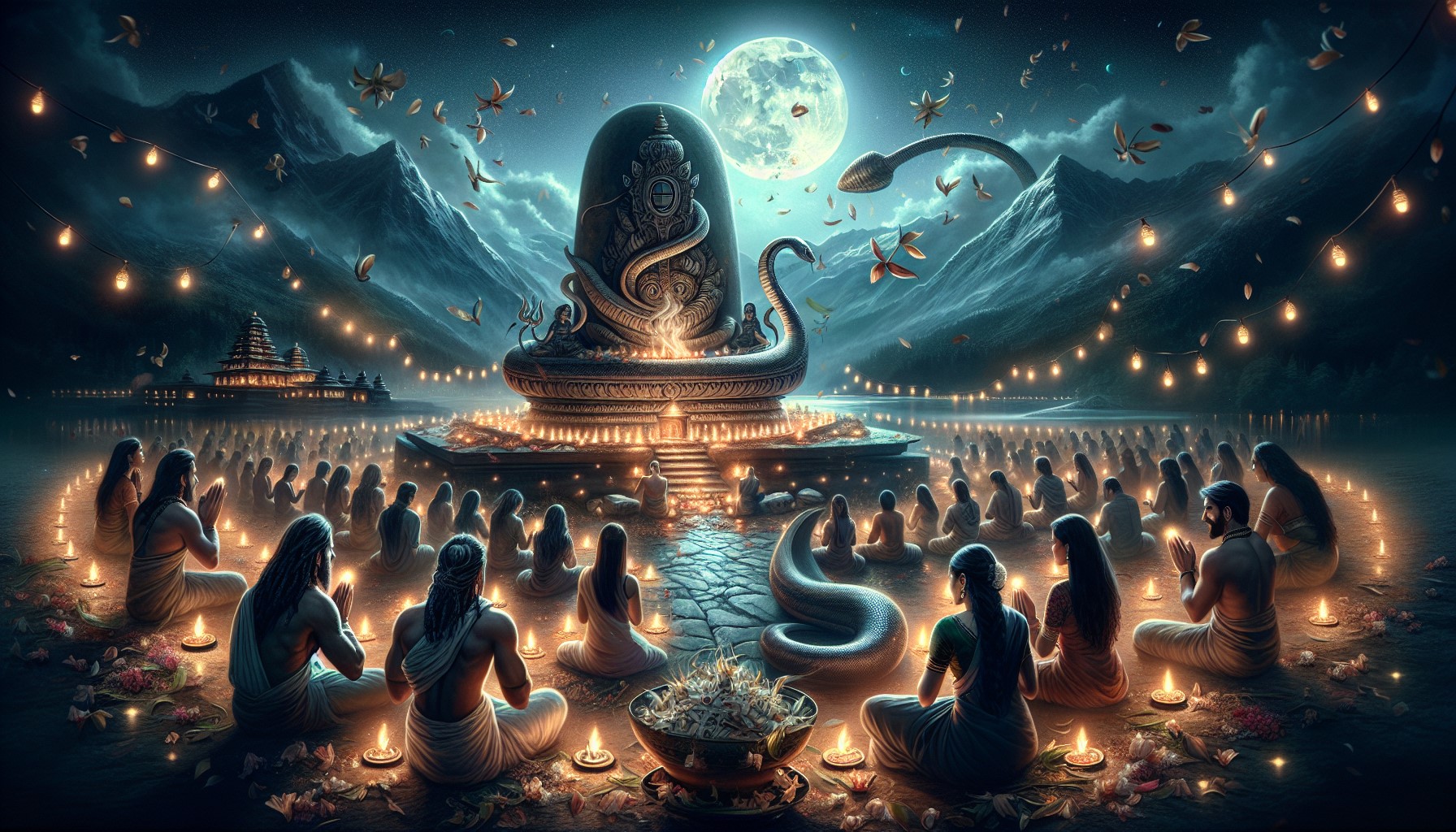Why Do We Celebrate Maha Shivratri

Introduction:
Mahashivaratri, or the Great Night of Shiva, stands as a cherished celebration in Hindu tradition. It typically falls in February or March and is marked by fervent devotion and spiritual observance. The festival centers around the veneration of Lord Shiva, one of the principal deities in Hinduism, symbolizing the cosmic forces of creation, preservation, and destruction.
Mahashivaratri transcends geographical and cultural boundaries, uniting millions of devotees worldwide in a night-long celebration that reflects both reverence and joy.
Mythological Tapestry: The Cosmic Dance of Lord Shiva

At the heart of Mahashivaratri lies a captivating mythological tale of Lord Shiva's Tandava, a cosmic dance that encompasses the eternal rhythm of the universe. The Tandava is a dance of immense power, symbolizing the cyclical nature of existence — creation, preservation, and ultimately, destruction.
As we delve into this myth, we begin to understand Mahashivaratri not just as a ritualistic celebration but as a cosmic event, where the divine energy of Lord Shiva takes center stage.
Spiritual Significance: A Night of Transformation
Mahashivaratri is more than a cultural event; it is a night of profound spiritual significance. Devotees view this auspicious occasion as an opportunity for spiritual awakening and personal transformation. Practices such as meditation, prayer, and self-reflection are integral components, allowing individuals to connect with their inner selves and the divine.
The heightened spiritual energy during Mahashivaratri is believed to facilitate a deeper communion with the divine and accelerate one's journey on the path of self-realization.
Renewal and Rejuvenation: Embracing Change

In the cosmic dance of Lord Shiva, we find a powerful metaphor for personal growth and renewal. Mahashivaratri encourages individuals to reflect on their lives, letting go of old patterns and embracing positive change. The festival becomes a symbolic gateway for shedding the past and welcoming a rejuvenated self.
Through the celebration of Mahashivaratri, devotees seek the strength to navigate life's challenges and transform themselves, much like the cyclical dance of Lord Shiva.
Community and Unity: Beyond Boundaries
Mahashivaratri is a celebration that bridges cultural and geographical divides, fostering a sense of unity among diverse communities. Regardless of caste, creed, or nationality, people come together to honor the universal principles embodied by Lord Shiva.
This communal spirit highlights the festival's ability to unite individuals under a shared reverence for the divine, transcending the limitations of cultural differences.
Rituals and Traditions: Sacred Practices

Mahashivaratri is marked by a tapestry of sacred rituals, each laden with profound symbolism. From fasting to night-long vigils and visits to Shiva temples, these practices serve as expressions of devotion and commitment. Fasting, in particular, is seen as a means to purify the body and mind, allowing devotees to attune themselves to the divine energies present on this auspicious night.
Each ritual is a thread in the intricate fabric of Mahashivaratri, weaving together a spiritual experience that goes beyond the surface-level observances.
Contemporary Relevance: Mahashivaratri in Modern Times
While rooted in tradition, Mahashivaratri maintains its relevance in the contemporary world. In the hustle and bustle of modern life, individuals find solace and spiritual grounding through the observance of this ancient festival. The core values of Mahashivaratri — introspection, spiritual connection, and renewal — continue to resonate with people seeking meaning and balance in their lives.
The celebration has evolved to accommodate changing lifestyles while preserving its timeless spiritual essence.
Artistic Expressions: Creativity in Celebration
Mahashivaratri inspires a myriad of artistic expressions that enrich the cultural landscape. From intricate dance performances depicting Lord Shiva's Tandava to melodious renditions of devotional songs, art becomes a medium through which the festival's vibrancy is expressed.
The creative interpretations of Mahashivaratri contribute to a dynamic cultural tapestry, reinforcing the festival's significance beyond religious boundaries.
Global Celebrations: Mahashivaratri Around the World
Beyond its Indian roots, Mahashivaratri is celebrated across the globe, showcasing the universality of its appeal. Different countries bring their unique flavors to the festival, adapting traditional practices to their cultural contexts.
Exploring Mahashivaratri's global footprint unveils the diversity of traditions and highlights its role in fostering intercultural understanding.
Personal Reflections: Stories of Transformation

The true essence of Mahashivaratri comes alive through personal narratives of transformation. Sharing stories of individuals who have experienced profound change during this sacred night adds a human dimension to the celebration. These personal reflections serve as testaments to the festival's capacity to touch lives, instigating spiritual growth and a renewed sense of purpose.
Through these stories, we witness the real and lasting impact of Mahashivaratri on the individual spiritual journeys of devotees worldwide.



